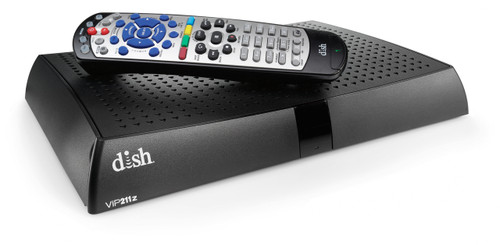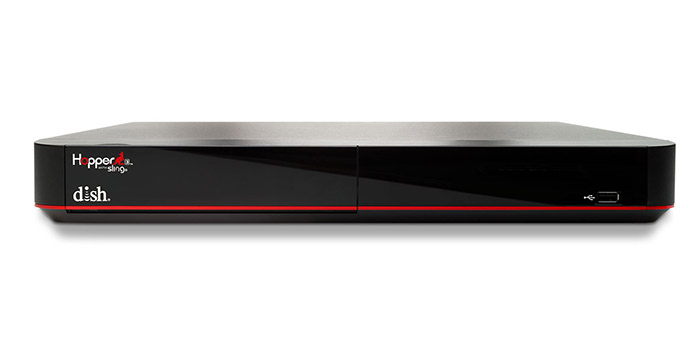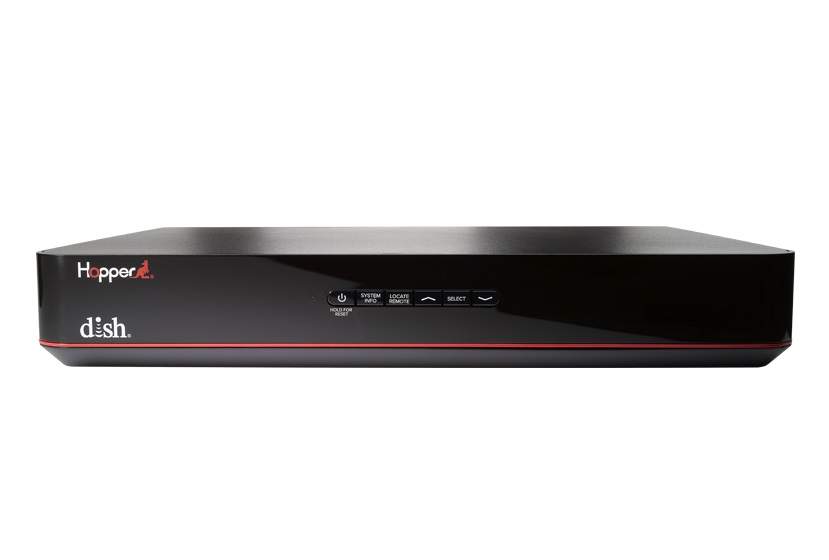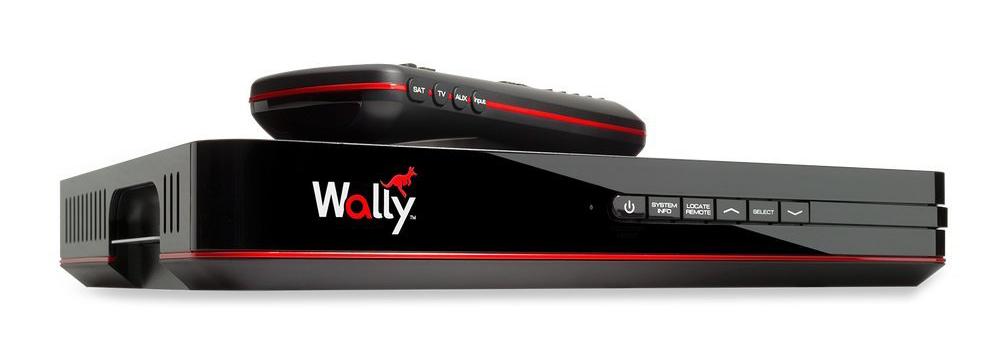DISH launched its satellite service in 1996, close to 30 years ago. That’s long enough that there have been several generations of receivers out there. One of the most popular were the ViP series of receivers and DVRs which were available in the 2000s. Even though most ViP hardware is coming on 20 years old, it’s proven incredibly reliable out there in the field. That means a lot of people are out there still wondering if they should keep their old hardware or upgrade to new hardware.
The DISH ViP series were receivers and DVRs capable of high-definition reception. The DVRs had something that made them unique in the marketplace: one DVR could feed two TVs. That made them beloved among thrifty satellite fans and it’s one of the reasons that people still hold onto them today.
DISH used a very rational naming scheme for the ViP series. Each box got a three digit model number. The first digit was the kind of device and the generation. Receivers got a 2, while DVRs got a 6 (earlier ones) or a 7 (later ones.) The second digit said how many rooms were supported by one box and the third told the number of tuners in the device. In other words:

This is a ViP211. It’s a receiver with one tuner that supports one room.

This is a ViP722, the second-generation DVR that had two tuners and supported two rooms.
Later iterations of the 211 series had a letter added to indicate a different model. Later 211s, for example, looked like this ViP211z:

You can still get a ViP211 from Solid Signal, as DISH still offers them to support older satellite dishes.
The ViP series DVRs were designed to support one room with HD programming and one room with SD programming. All that was needed for the second room was a single RG6 cable which connected to the remote TV and to the ViP DVR. RF remote technology meant that you could point the remote at TV #2 and it would still control the DVR.
At the time, this was far beyond what other services could do with their DVRs. It did limit the DVR’s ability to record something while watching something else, since the DVR only had two tuners. But it did give a very satisfying experience for people who wanted a simple setup in a bedroom or spare room.
In 2012, DISH revealed their Hopper DVR. The initial Hopper had 7 tuners, while later models had 16. There were also other great features such as the ability to stream from the house to a mobile device, the ability to record all prime time national broadcast networks at once, and the ability to automatically skip commercials on some channels. This was a big upgrade in so many ways.
However, the Hopper also brought DISH in line with the way other companies handled multiple TVs. Hopper systems use the Joey client box at every TV to provide full HD/4K DVR functionality. It’s really a better option and gives the user more function, but it does mean a box at every TV, even if it’s wireless.
The current model, Hopper 3, uses a different technology to distribute signals from the dish to the Hopper, and from the Hopper to the Joeys. This means that unless you want to maintain two completely different sets of wiring, you will have to give up the ViP series receivers.
Today, DISH has a full lineup of receivers and DVRs to fill every slot formerly held by a ViP series box.

DISH’s Hopper 3 is a huge boost in form and function with 16 tuners, HD and 4K service, and the ability to use streaming apps like Netflix without changing inputs. The home only needs one Hopper 3, and you can use Joey clients for every other room. You can choose from wired or wireless, HD-only or HD+4K, or choose the Joey 4 which allows additional streaming apps.

The Hopper Duo is the best replacement for the ViP series DVRs. Like the older DVRs, it can record two things at once. It can’t output to multiple rooms, though. If that’s the key feature for you, choose the Hopper 3.

If you want or need a standalone receiver, you’ll want the Wally. It takes the place of the 211 and offers a better menu system, better performance and also gives you features like voice search if connected to a network.
I would say in general yes. With only one exception, the new hardware does everything the old hardware did. That exception is the ability to run two TVs from one box. While that was a real crowd pleaser in 2008, most folks today don’t want standard definition service and they do want the ability to always record something even if you’re watching. DISH doesn’t have a current product that lets you run two TVs like that, simply because of low demand. If it’s something you still enjoy doing, I get you. I really do. Unfortunately technology has moved on and sometimes that can be a little hard to adapt to.
If you want to discuss your options for moving forward, including finding older ViP DVRs and why you may not be able to activate them, call the experts at Solid Signal. We’re here for you during East Coast business hours. Call 888-233-7563 or fill out the form below.
The post Is it worth it to keep an old DISH ViP series receiver? appeared first on The Solid Signal Blog.
Continue reading...
What is the DISH ViP series?
The DISH ViP series were receivers and DVRs capable of high-definition reception. The DVRs had something that made them unique in the marketplace: one DVR could feed two TVs. That made them beloved among thrifty satellite fans and it’s one of the reasons that people still hold onto them today.
Identifying and naming the ViP series
DISH used a very rational naming scheme for the ViP series. Each box got a three digit model number. The first digit was the kind of device and the generation. Receivers got a 2, while DVRs got a 6 (earlier ones) or a 7 (later ones.) The second digit said how many rooms were supported by one box and the third told the number of tuners in the device. In other words:

This is a ViP211. It’s a receiver with one tuner that supports one room.

This is a ViP722, the second-generation DVR that had two tuners and supported two rooms.
Later iterations of the 211 series had a letter added to indicate a different model. Later 211s, for example, looked like this ViP211z:

You can still get a ViP211 from Solid Signal, as DISH still offers them to support older satellite dishes.
What made the ViP622 and ViP722 special
The ViP series DVRs were designed to support one room with HD programming and one room with SD programming. All that was needed for the second room was a single RG6 cable which connected to the remote TV and to the ViP DVR. RF remote technology meant that you could point the remote at TV #2 and it would still control the DVR.
At the time, this was far beyond what other services could do with their DVRs. It did limit the DVR’s ability to record something while watching something else, since the DVR only had two tuners. But it did give a very satisfying experience for people who wanted a simple setup in a bedroom or spare room.
Moving away from the ViP series
In 2012, DISH revealed their Hopper DVR. The initial Hopper had 7 tuners, while later models had 16. There were also other great features such as the ability to stream from the house to a mobile device, the ability to record all prime time national broadcast networks at once, and the ability to automatically skip commercials on some channels. This was a big upgrade in so many ways.
However, the Hopper also brought DISH in line with the way other companies handled multiple TVs. Hopper systems use the Joey client box at every TV to provide full HD/4K DVR functionality. It’s really a better option and gives the user more function, but it does mean a box at every TV, even if it’s wireless.
The current model, Hopper 3, uses a different technology to distribute signals from the dish to the Hopper, and from the Hopper to the Joeys. This means that unless you want to maintain two completely different sets of wiring, you will have to give up the ViP series receivers.
What we do now
Today, DISH has a full lineup of receivers and DVRs to fill every slot formerly held by a ViP series box.

DISH’s Hopper 3 is a huge boost in form and function with 16 tuners, HD and 4K service, and the ability to use streaming apps like Netflix without changing inputs. The home only needs one Hopper 3, and you can use Joey clients for every other room. You can choose from wired or wireless, HD-only or HD+4K, or choose the Joey 4 which allows additional streaming apps.

The Hopper Duo is the best replacement for the ViP series DVRs. Like the older DVRs, it can record two things at once. It can’t output to multiple rooms, though. If that’s the key feature for you, choose the Hopper 3.

If you want or need a standalone receiver, you’ll want the Wally. It takes the place of the 211 and offers a better menu system, better performance and also gives you features like voice search if connected to a network.
Is it worth upgrading?
I would say in general yes. With only one exception, the new hardware does everything the old hardware did. That exception is the ability to run two TVs from one box. While that was a real crowd pleaser in 2008, most folks today don’t want standard definition service and they do want the ability to always record something even if you’re watching. DISH doesn’t have a current product that lets you run two TVs like that, simply because of low demand. If it’s something you still enjoy doing, I get you. I really do. Unfortunately technology has moved on and sometimes that can be a little hard to adapt to.
If you want to discuss your options for moving forward, including finding older ViP DVRs and why you may not be able to activate them, call the experts at Solid Signal. We’re here for you during East Coast business hours. Call 888-233-7563 or fill out the form below.
The post Is it worth it to keep an old DISH ViP series receiver? appeared first on The Solid Signal Blog.
Continue reading...

